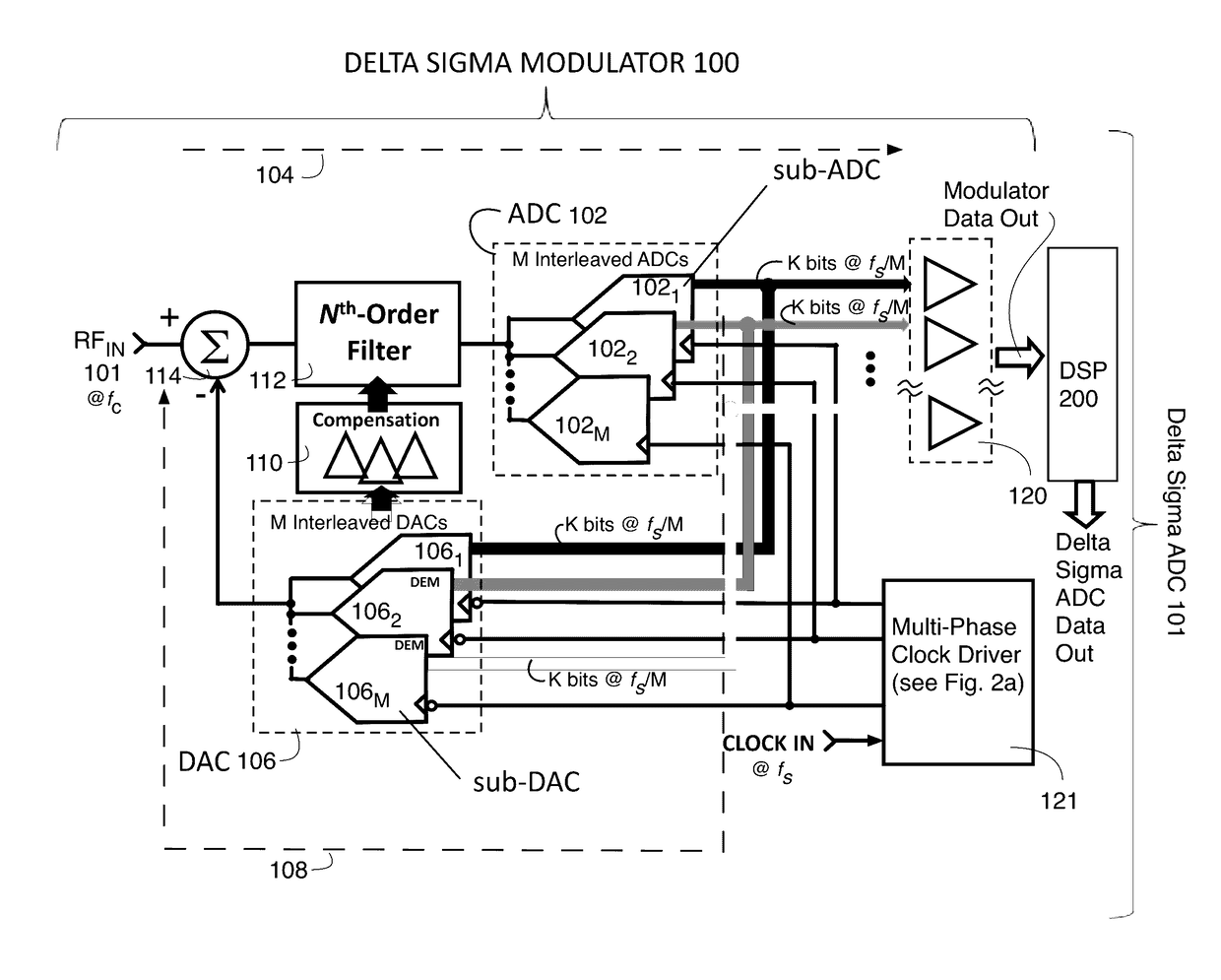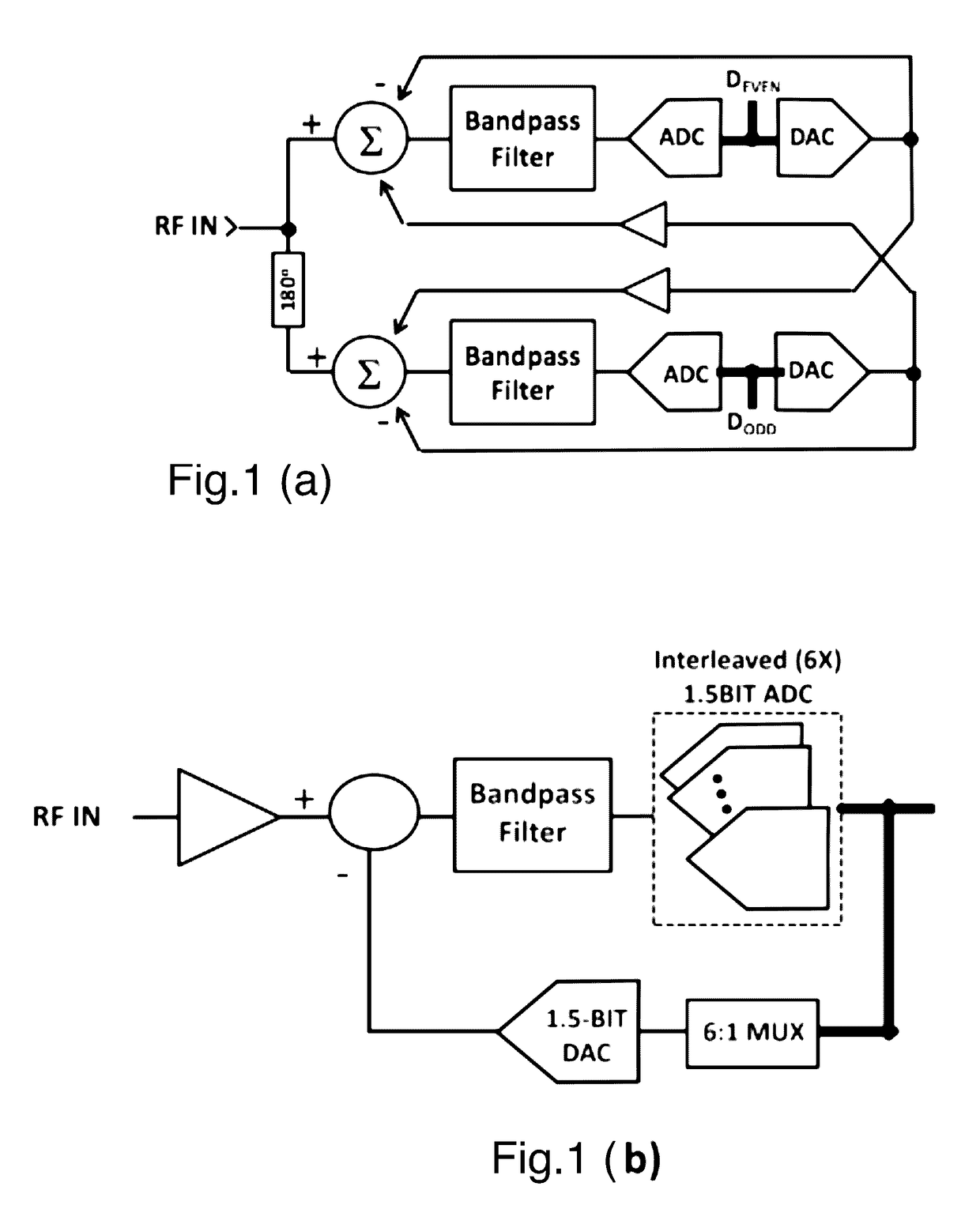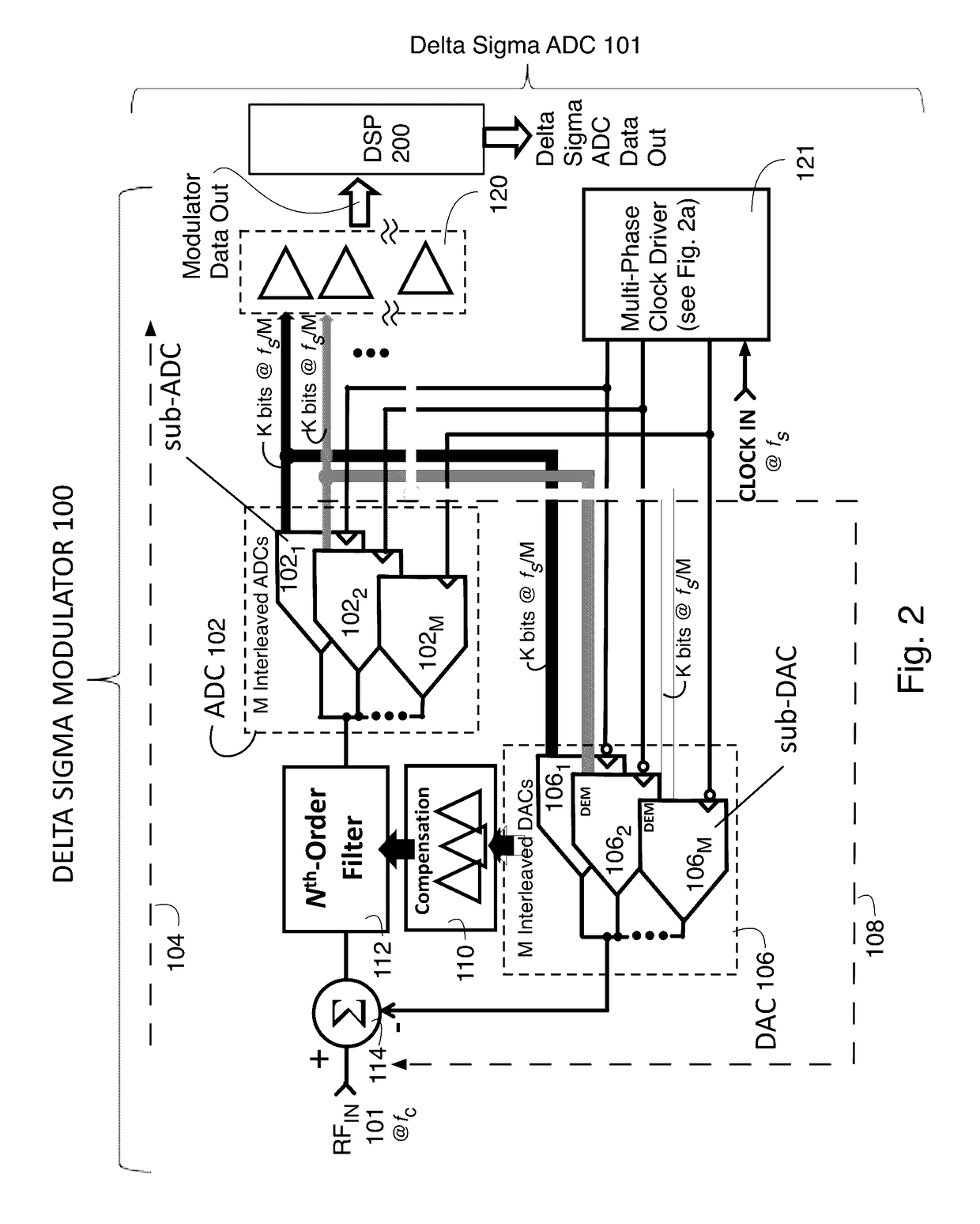Interleaved Δ-Σ modulator
a deltasigma () modulator and interleaved technology, applied in the field of interleaved deltasigma () modulators, can solve the problems of imposing even harder design challenges on the quantizers within the modulator, affecting the performance of the modulator, and affecting the operation of the software-based receiver, so as to achieve the effect of higher clock rate and higher input signal frequency
- Summary
- Abstract
- Description
- Claims
- Application Information
AI Technical Summary
Benefits of technology
Problems solved by technology
Method used
Image
Examples
Embodiment Construction
[0032]A block diagram of the ΔΣ modulator 100 architecture of the present invention is illustrated by FIG. 2. The block diagram is shown for the most generic case: an Nth Order filter, an M time-wise interleaving factor, and K-bits in the quantizers of the depicted ADCs 1021-102M and the depicted DACs 1061-106M with a modulator clock rate of fs. The architecture presented is different from a conventional continuous time ΔΣ modulator in that there is a bank 102 of interleaved Analog to Digital Converters (ADCs) 1021-102M in a forward path 104 and a bank 106 having an equal number of interleaved Digital to Analog Converters (DACs) 1061-106M in a feedback path 108. The input signal RFIN is applied to a summing block 114 with the feedback path being subtracted at that summing block 116. The analog input characteristics (amplitude, frequency) of the RFIN signal are encoded into a digital pulse stream which is applied to a DSP 200 which decimates the pulse string and when connected to the...
PUM
 Login to View More
Login to View More Abstract
Description
Claims
Application Information
 Login to View More
Login to View More - R&D
- Intellectual Property
- Life Sciences
- Materials
- Tech Scout
- Unparalleled Data Quality
- Higher Quality Content
- 60% Fewer Hallucinations
Browse by: Latest US Patents, China's latest patents, Technical Efficacy Thesaurus, Application Domain, Technology Topic, Popular Technical Reports.
© 2025 PatSnap. All rights reserved.Legal|Privacy policy|Modern Slavery Act Transparency Statement|Sitemap|About US| Contact US: help@patsnap.com



